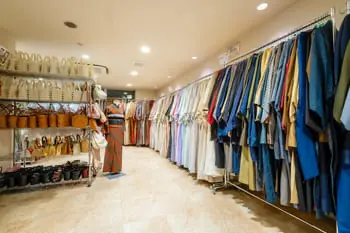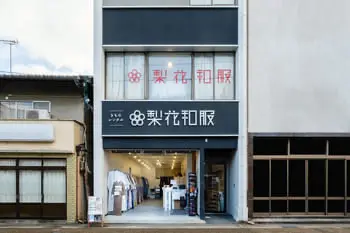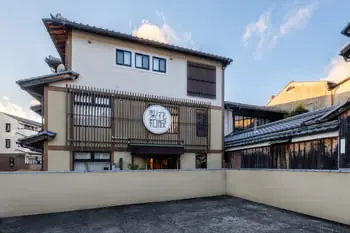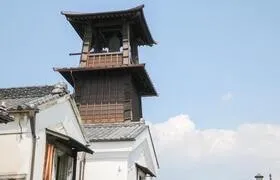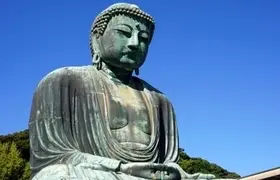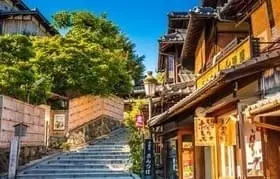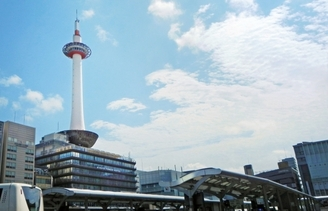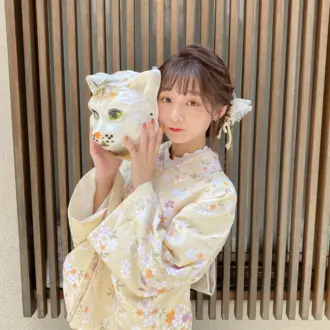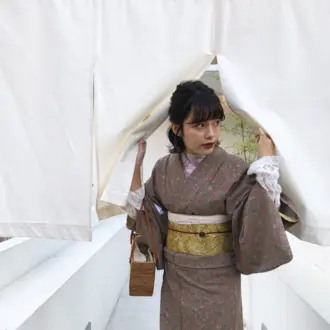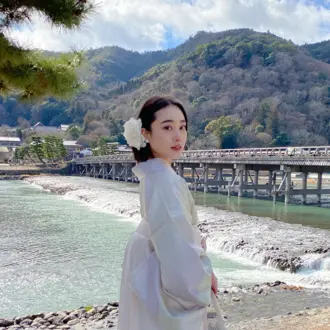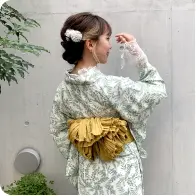10 things to keep in mind when renting a kimono and sightseeing in Kyoto
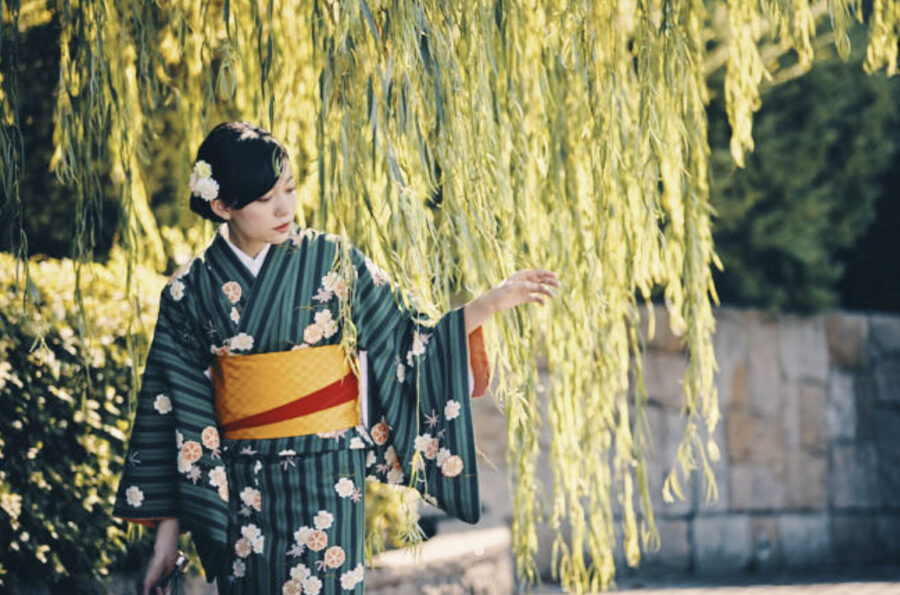
Many people visiting Kyoto might consider renting a kimono.
Kyoto is home to numerous kimono rental shops, offering rentals at relatively affordable prices, allowing you to enjoy sightseeing in a kimono. Wearing a kimono offers a unique experience, naturally encouraging more graceful movements.
Above all, Kyoto’s streetscapes harmonize beautifully with kimonos. However, for those unfamiliar with wearing kimonos, concerns about proper wear and etiquette might arise.
Here are ten tips for those considering kimono rentals for sightseeing in Kyoto!
※This article is supervised and created by Riawafuku Kimono Rental Kyoto, operated by TripFarm Corporation.
- 1. Choosing Zori (Footwear) When Sightseeing in Kyoto with a Kimono Rental
- 2. Choosing the Right Location for Kimono Rental in Kyoto is Crucial
- 3. Shawls: Handy for Kimono Rental in Both Summer and Winter
- 4. Winter Cold Weather Precautions When Renting a Kimono in Kyoto
- 5. Using the Restroom in a Rental Kimono
- 6. How to Dine Without Soiling a Rental Kimono
- 7. Avoid Walking on Long Slopes, Stone Steps, and Areas with Many Stairs
- 8. Consider Using Rickshaws or Kimono Discount Taxis
- 9. Be Cautious in Crowds When Wearing a Rental Kimono in Kyoto
- 10. Plan a Relaxed Schedule When Renting a Kimono
- 11. Best Seasons for Kimono Rental in Kyoto – Is November Too Cold?
Choosing Zori (Footwear) When Sightseeing in Kyoto with a Kimono Rental

When renting a kimono, it’s not just about the size or design preference, but also crucial to pay attention to the choice of zori (traditional Japanese footwear).
Zori are worn with the strap between the big toe and the second toe. Choosing ill-fitting zori can cause pain at the base of the toes.
Select zori with thick, soft straps and ensure they fit comfortably.
While new zori might seem appealing, slightly worn-in rental zori are less likely to cause blisters, especially with the extensive walking involved in Kyoto sightseeing.
Stretching the straps gently by hand before wearing can make them easier to put on and prevent discomfort.
Applying plasters on the area between the big toe and second toe can also help avoid soreness.
Choosing the Right Location for Kimono Rental in Kyoto is Crucial
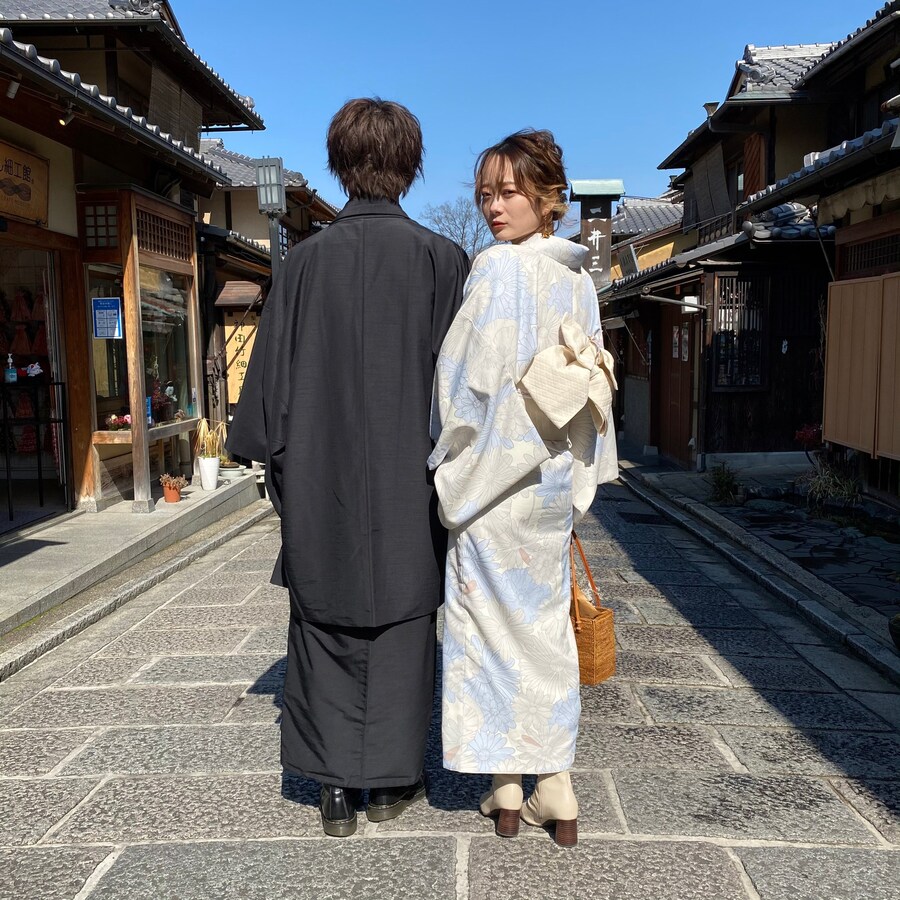
Kyoto is vast, so choosing the right location for kimono rental is very important for a smooth sightseeing experience. Select a location that best suits your needs.
There are four main areas:
- Gion Area: Convenient for visiting Kamo River, cafes, Yasaka Shrine, and Fushimi Inari Shrine.
- Kiyomizu Temple Area: Ideal for sightseeing around Kiyomizu Temple.
- Kyoto Station Area: Accessible to various areas but not immediately close to tourist spots.
- Arashiyama Area: Safe choice for exploring the popular Arashiyama.
Choose based on your desired destinations and available rental time.
For more information on where to rent in Kyoto, please refer to:
>Where to Rent a Kimono in Kyoto – Convenient Locations
If you’re considering renting near your hotel or plan to travel by train, Kyoto Station Kimono Rental is recommended.
Riawafuku Kimono Rental Kyoto Station is conveniently located just a 7-minute walk from Kyoto Station Central Exit, perfect for kimono strolls.
If you’re considering kimono rental near Kyoto Station, we invite you to visit us!
Shawls: Handy for Kimono Rental in Both Summer and Winter
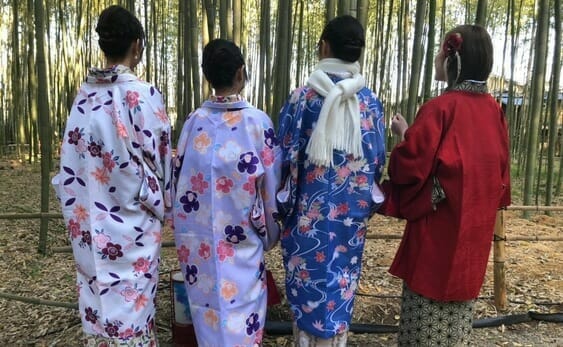
Kyoto’s winters can be very cold due to its basin location, especially in areas surrounded by mountains like Arashiyama. Therefore, warm clothing is essential for winter kimono rentals.
Shawls are a useful item for winter kimono rentals, offering warmth during the colder months and protection from sunburn in summer.
Although some rental shops offer warm sets, including a kimono and haori (a traditional jacket), a shawl can be more beneficial as haoris don’t cover the neck.
Some kimono rental shops also offer shawl rentals, so it’s worth inquiring.
Furthermore, when riding public transport or walking in crowds, draping the shawl over the back of the kimono’s obi can help prevent the obi from loosening or getting dirty. A shawl is a perfect accessory for any kimono!
Choose shawls with different fabrics and textures to suit the season.
Winter Cold Weather Precautions When Renting a Kimono in Kyoto
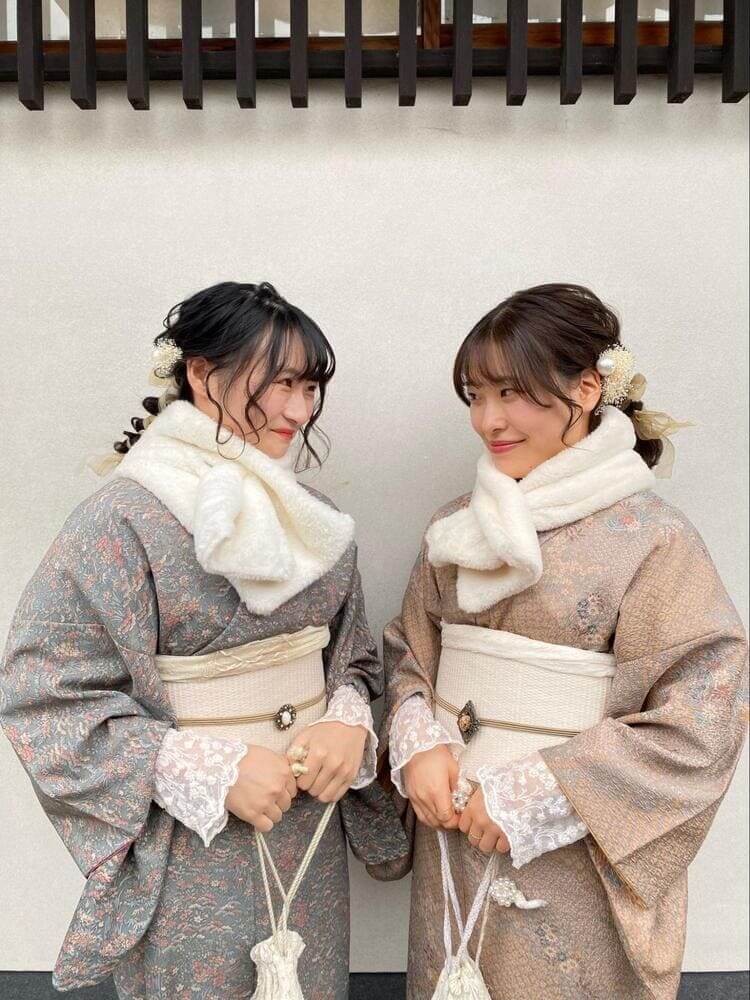
As mentioned, it’s crucial to take cold weather precautions when renting a kimono in Kyoto during the colder months.
Many think wearing a kimono with layers such as an under-kimono, kimono, and haori would be warm enough. However, cold air can sneak in through the sleeves and collar, so proper precautions are necessary.
Wearing a Heattech inner layer and leggings can significantly increase warmth.
Bringing a thick shawl and using warmers can also help.
For the feet, which can get particularly cold, it’s advisable to buy velvet tabi socks. These are thicker than standard tabi and can be purchased for around 500 yen at a clothing store or a traditional Japanese goods store in Kyoto.
Even if you don’t regularly wear kimonos, these tabi socks are practical post-tourism in Kyoto.
For more tips on staying warm while renting a kimono in Kyoto, please visit:
>9 Essential Items for Winter
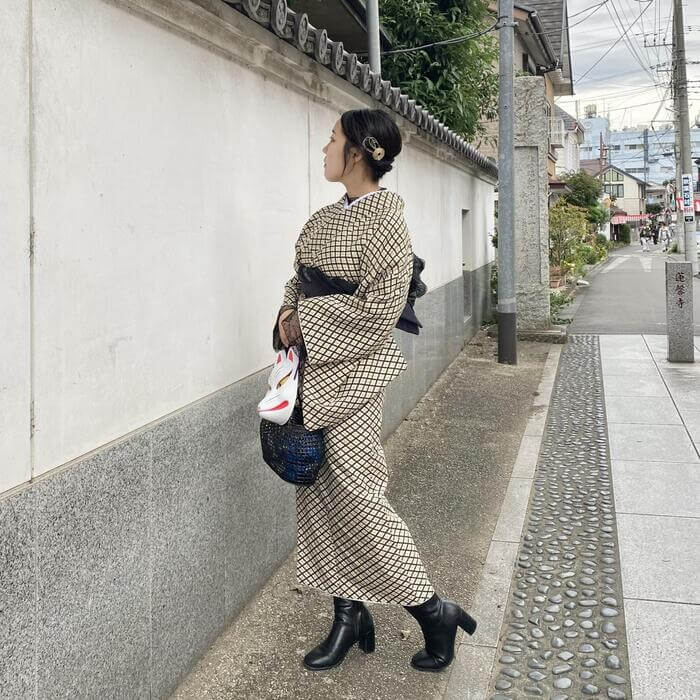
- Keep your back straight
- Walk with smaller steps than usual
- Walk slightly pigeon-toed
Many feel a sense of discomfort or restricted movement after getting dressed in a rental kimono and stepping out for sightseeing in Kyoto.
Walking in a kimono restricts your stride, and you may find it challenging to walk as you normally would.
To walk gracefully in a kimono, first, stand with your back straight and take smaller steps than usual.
Also, walk slightly pigeon-toed. The idea is to take small, quick steps without resorting to shuffling. Even when in a hurry, avoid taking long strides.
Imitating the walking style of maiko seen in dramas or movies can help prevent the kimono from disheveling and ensures comfort while visiting various Kyoto attractions.
For detailed tips on how to walk in a kimono to avoid it from coming undone, please see this article:
>How to Walk in Kyoto Without Your Kimono Coming Undone
Using the Restroom in a Rental Kimono
Wondering how to use the restroom while wearing a rental kimono?
Firstly, it’s best to choose a Western-style toilet.
Before sitting, lift each layer of the kimono from the top, then lower your undergarments and sit on the toilet seat.
Afterwards, simply lay each layer back down in place to avoid disheveling the kimono.
The same approach applies to Japanese-style toilets, though keeping the kimono lifted can be more challenging.
For detailed instructions on using the restroom while wearing a kimono, refer to this article:
>How to Use the Restroom in a Kimono Without Disheveling It
How to Dine Without Soiling a Rental Kimono
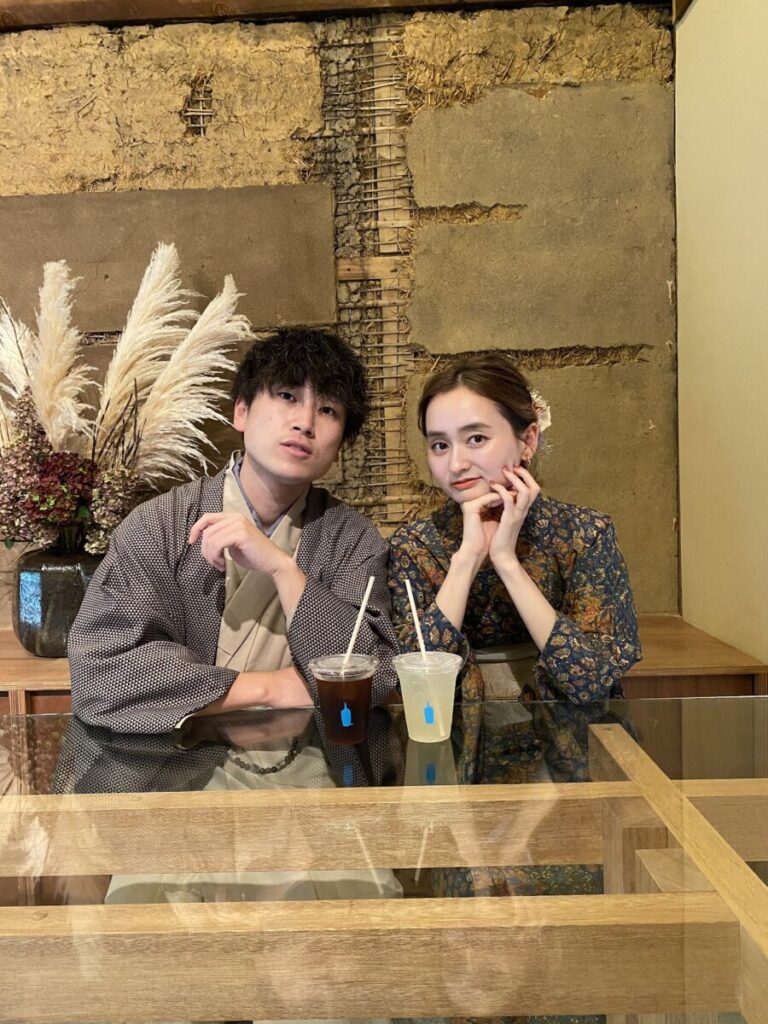
To avoid causing inconvenience to the rental kimono shop staff due to stains, it’s essential to be mindful of how you dine in a kimono.
First, prepare a handkerchief.
Place the handkerchief on your lap, tuck it into your obi, or in the overlap of your collar to protect the kimono from stains.
When reaching for items like soy sauce or toothpicks on the edge of the table, hold the sleeve (tamoto) with the opposite hand to prevent it from dipping into your meal.
Be particularly cautious with sauces!
Guard against spills by eating with your hand or a handkerchief close by.
And remember, since the waist tie of the kimono might be tight, be careful not to overeat and make yourself uncomfortable.
Avoid Walking on Long Slopes, Stone Steps, and Areas with Many Stairs
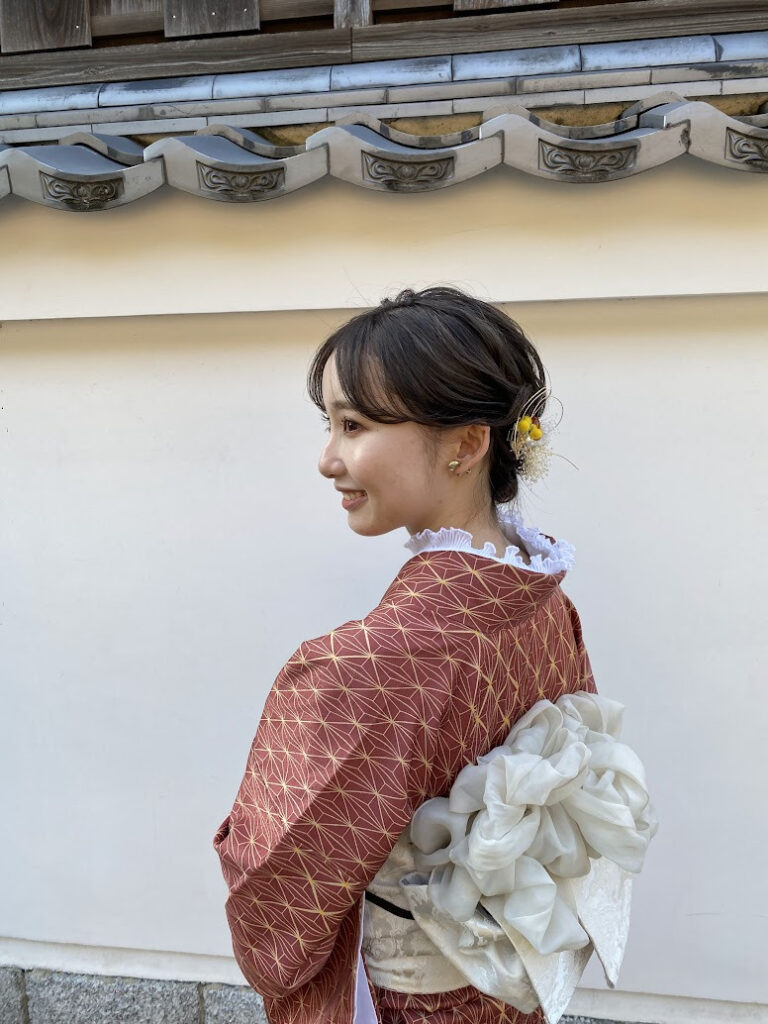
Kyoto’s beautiful streetscapes invite leisurely strolls, but caution is needed in choosing where to walk.
Some places require climbing long staircases, so research in advance is necessary.
Popular Kyoto tourist spots like Kiyomizu Temple and Fushimi Inari Shrine, known for their many steps and uneven terrain, can be challenging to navigate in a kimono!
When walking in rental kimonos in areas with steps, there are tricks to prevent disheveling.
Lift the right side of the kimono’s hem with your right hand. This makes it less likely for the hem to catch on steps and prevents disheveling.
Move slowly and avoid brisk walking as you would in regular clothes.
The area around Kiyomizu Temple, particularly, has many slopes, increasing the likelihood of disheveling.
If you plan to visit Kiyomizu Temple after renting a kimono, renting in the nearby area is recommended. Rikawafuku Kiyomizu Temple Store is a convenient choice, located just a 5-minute walk from the temple and close to the food-friendly Ninen-zaka.
Please consider using Rikawafuku Kiyomizu Temple Store for kimono rentals in the vicinity.
Consider Using Rickshaws or Kimono Discount Taxis
Even walking on flat ground can be tiring in a kimono. Kyoto has buses, trains, and taxis, but when fatigued indoors, rickshaws can be a handy option.
Kyoto also features taxis offering discounts for kimono wearers, so do some research beforehand.
A tip for getting into cars like taxis: first, sit shallowly facing outward, then twist your body into the car to prevent the kimono from disheveling. After getting in, check to ensure the hem isn’t folded up.
Be Cautious in Crowds When Wearing a Rental Kimono in Kyoto
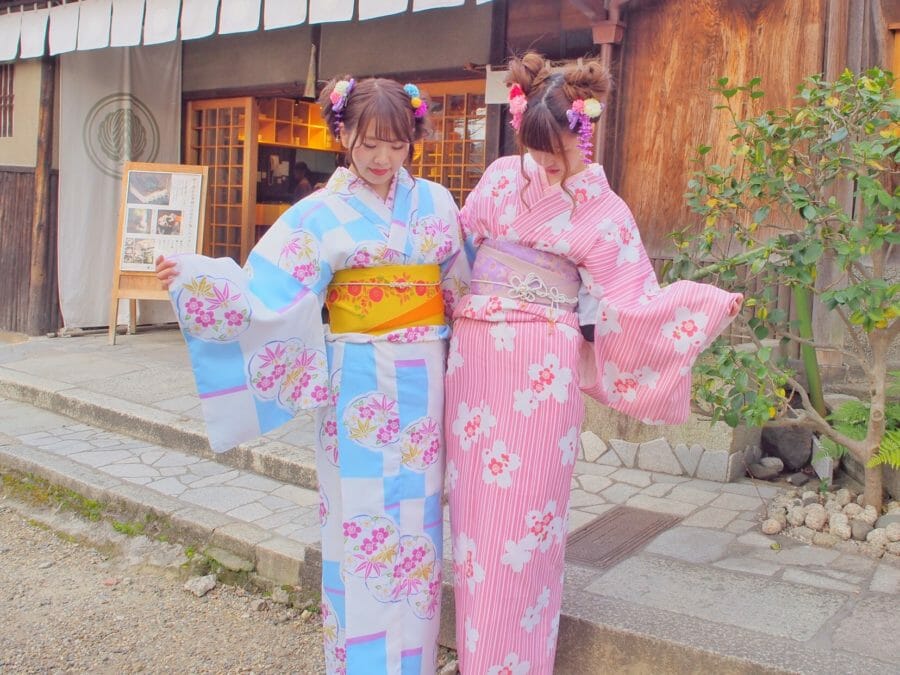
Walking through crowds in a kimono can lead to disheveling and fatigue. However, Kyoto, with its many tourist attractions, is always bustling with tourists and school trip groups…
Researching relatively less crowded places and times can be beneficial.
The peak seasons are early November to early December for autumn leaves and mid-March to mid-April for cherry blossoms. Conversely, less crowded times are during the rainy season in June and the colder months of January and early February.
Peak times at tourist spots are generally from 9 AM to 2 PM, with weekends being especially busy around 10 AM.
Plan a Relaxed Schedule When Renting a Kimono
As previously mentioned, renting a kimono involves time for dressing and hairstyling, and unique kimono manners, so plan a relaxed schedule.
Kimono rental shops are likely to be busy during tourist seasons, so arriving early with ample time is advisable.
For more information on recommended times for kimono rental, visit: Recommended Reservation and Return Times for Kimono Rental in Kyoto
These are essential points to remember when sightseeing in Kyoto in a kimono.
While this information might seem daunting, renting a kimono in Kyoto offers a unique experience!
Although kimonos can be challenging for those unaccustomed to wearing them, they offer a different feel and naturally encourage elegant movements.
Enjoy Kyoto sightseeing in a rented kimono!
>Kyoto Kimono Rental Plans & Price List
Best Seasons for Kimono Rental in Kyoto – Is November Too Cold?
When considering kimono rental in Kyoto, the season is a critical factor.
Below are the suitable and less suitable seasons for wearing a kimono:
Best Seasons for Kimono in Kyoto: October, November, and December are Ideal!
Fall to winter is a great time for kimonos. November might seem cold, but it’s the
perfect season for matching kimonos with the autumn leaves!
Unsuitable Seasons for Kimono in Kyoto: Opt for Yukata in Summer!
Summer is also a great time for traditional Japanese wear, but it’s the season for yukatas, not kimonos. Consider renting a yukata from a kimono rental shop!
Article Author
Rikawafuku operates four kimono rental stores in Kyoto, located in Arashiyama, Gion, Kiyomizu Temple, and near Kyoto Station, with over 87,000 users in 2021!
Affordable plans start from 4,000 yen for dressing and 5,000 yen for hair setting, located near popular tourist spots like Togetsukyo Bridge, Kiyomizu Temple, Yasaka Koshindo, and Yasaka Shrine.
Rikawafuku Kimono Rental Kyoto
Rikawafuku Gion Store
Rikawafuku Arashiyama Store
Rikawafuku Kiyomizu Temple Store
Rikawafuku Kyoto Station Front Store

